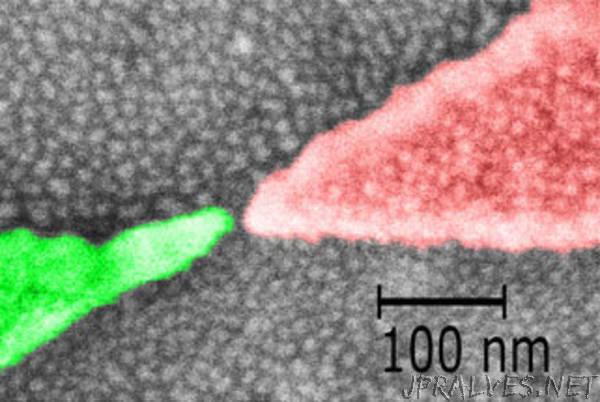
“Thermoelectric materials can convert temperature differences into electrical energy and vice versa. In nanodimensions, they are potentially useful for applications such as cooling microchips, or improving their energy efficiency in the form of nanoscale thermoelectric generators.
Thermoelectric materials can convert temperature differences into electrical energy and vice versa. In nanodimensions, they are potentially useful for applications such as cooling microchips, or improving their energy efficiency in the form of nanoscale thermoelectric generators. Although in macroscopic materials, the so-called transport coefficients necessary for determining the thermoelectric efficiency of a material can easily be measured, in nanodimensioned samples, it is technically difficult to measure one in particular, known as the Seebeck coefficient. A team of researchers from Grenoble, Pisa and Jülich have now measured this fundamental thermoelectric parameter for the first time in an individual single-quantum dot and modelled it theoretically.
“It is now possible for the first time to characterize in an experiment the thermoelectric efficiency of nanoscale and molecular quantum dot devices, which represents a tremendous step forward in the development of more powerful computer chips”, explains Dr. Theodoulos Costi of Forschungszentrum Jülich. Together with Dr. Velijko Zlatic, a colleague from Zagreb, he had already formulated a theory of thermoelectric transport through Kondo-correlated quantum dots back in 2010.
In addition to directly measuring the Seebeck coefficient, the team of experimental and theoretical physicists is now presented with a new opportunity to identify the so-called Kondo effect in their experiments. So far, physicists have identified the Kondo effect in quantum dots by measuring an anomalous increase in electrical conductivity, characteristic of this effect, at low temperatures below the Kondo temperature TK. Now a second experimental way to identify the effect has opened up: the measuring of a sign change of the Seebeck coefficient, characteristic of the Kondo effect, below a newly introduced temperature T1. This sign change as a signature of the Kondo effect, now measured for the first time, had already been predicted by Costi and Zlatic in 2010. “We now have new criteria available for identifying the Kondo effect in thermoelectric transport through quantum dots”, summarized Costi.”
